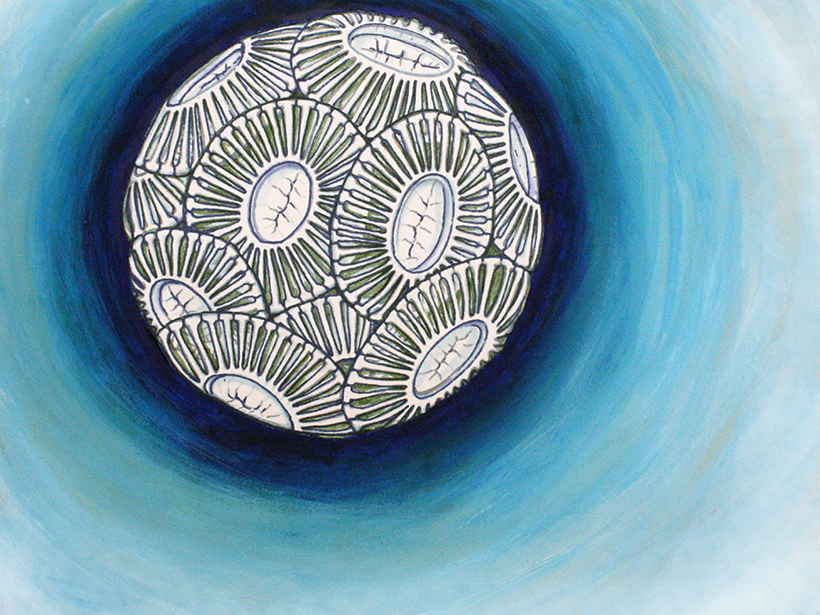Source: Global Biogeochemical Cycles
In the ocean that surrounds Antarctica, deep water wells up to the surface, carrying nutrients and other dissolved materials needed by light-loving ocean life. One of these materials is calcium carbonate, which, when dissolved, raises seawater alkalinity and helps the ocean respond to increasing carbon dioxide levels. Ocean currents carry this alkalinity-enriched water northward—unless tiny organisms intercept it and trap the alkalinity in the Southern Ocean.
Plankton in the Southern Ocean capture upwelled alkalinity to make protective shells composed of calcium carbonate. When the plankton die, their calcified shells sink and break down, returning the alkalinity to deep waters, from where it can well up again. If calcifying organisms are not very active, more high-alkalinity water escapes northward, allowing the global ocean to absorb more carbon dioxide. If, on the other hand, the calcifying plankton quickly use alkalinity that rises to the surface, this cycle traps alkalinity in the Southern Ocean.
Krumhardt et al. demonstrate this process through model simulations, showing that calcification in the Southern Ocean affects how alkalinity spreads around the world. In general, more calcifying activity traps alkalinity in the Southern Ocean, but certain conditions limit the main phytoplankton responsible. For instance, high levels of silicic acid and iron might favor silicon-shelled microorganisms over calcium carbonate-shelled ones, allowing more alkalinity to flow out to other oceans. High ocean acidity may also cause problems for calcifying organisms.
The researchers note that after an interruption in calcification in the Southern Ocean, increases in alkalinity reached some subtropical regions within 10 years. The alkalinity irregularity took longer to reach more northerly oceans, gradually becoming more apparent the longer that Southern Ocean calcification was suppressed. On millennial timescales, the authors say, the activity of tiny southern plankton has the potential to influence global climate. (Global Biogeochemical Cycles, https://doi.org/10.1029/2020GB006727, 2020)
—Elizabeth Thompson, Science Writer
Citation:
Thompson, E. (2021), The alkalinity trap at the bottom of the world, Eos, 102, https://doi.org/10.1029/2021EO154386. Published on 09 February 2021.
Text © 2021. AGU. CC BY-NC-ND 3.0
Except where otherwise noted, images are subject to copyright. Any reuse without express permission from the copyright owner is prohibited.

